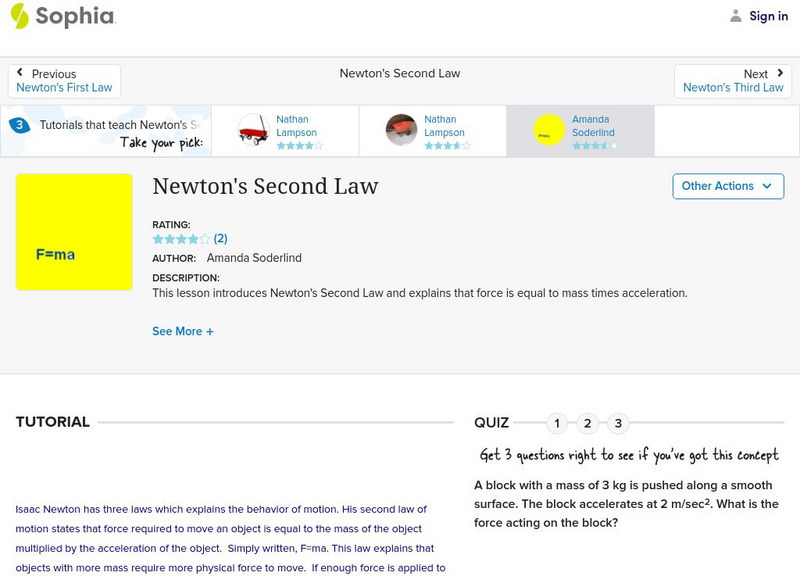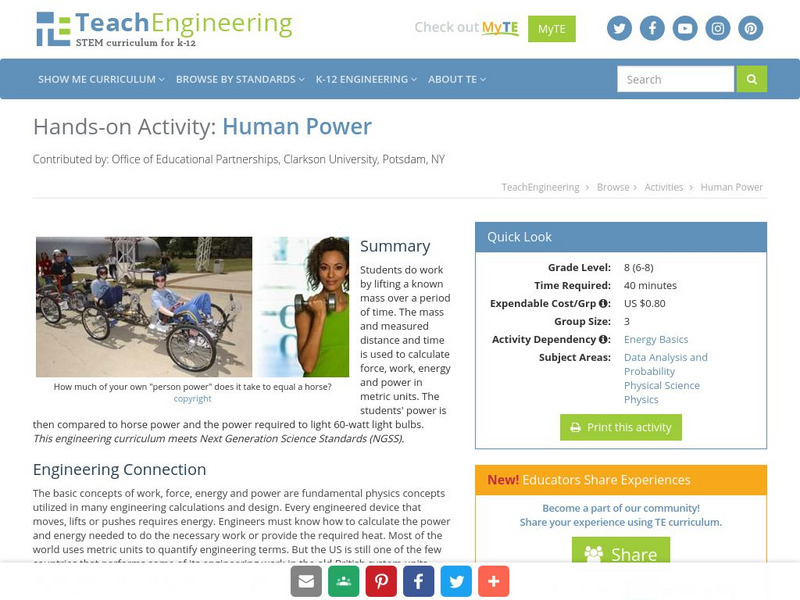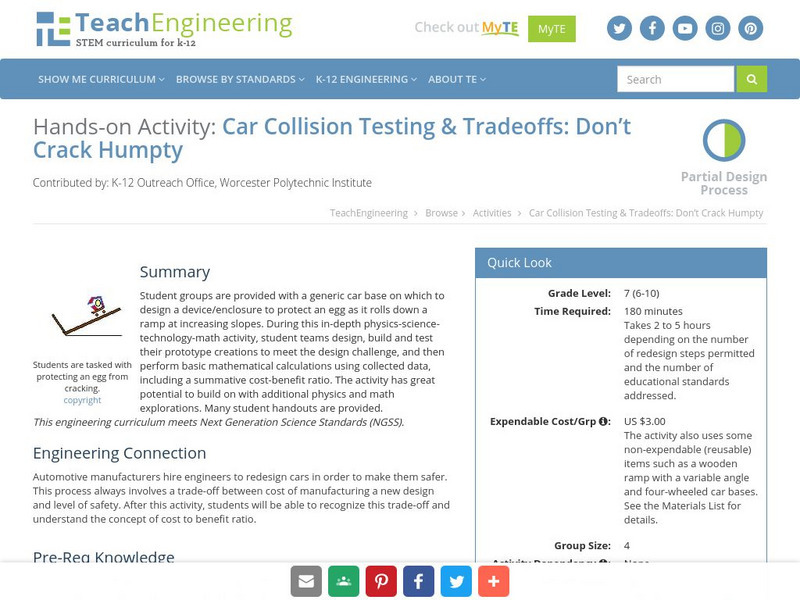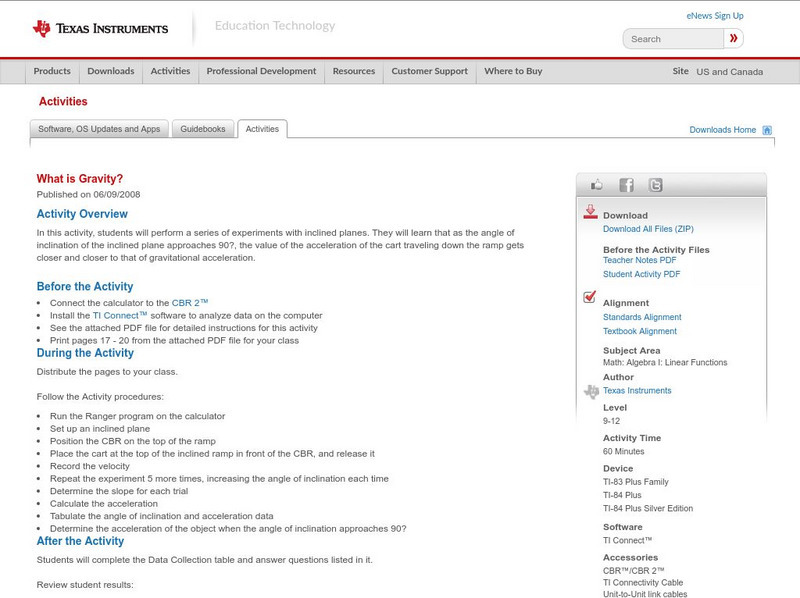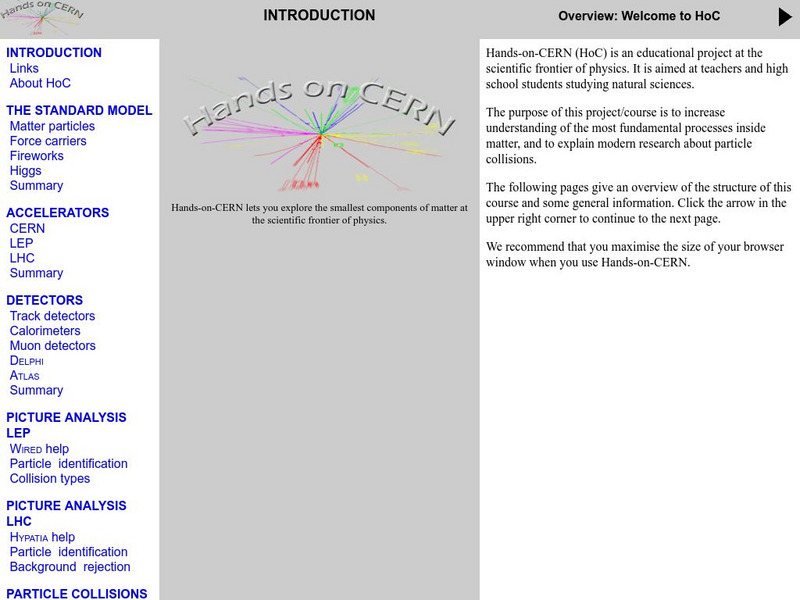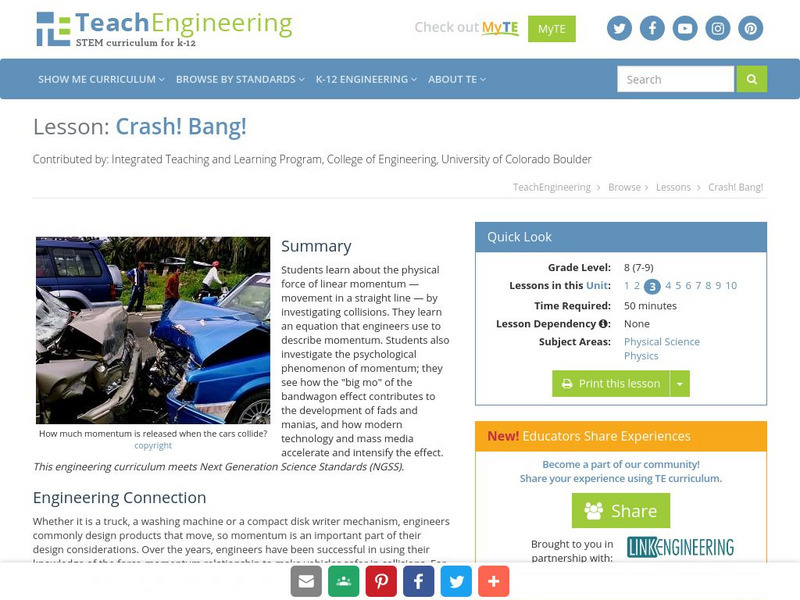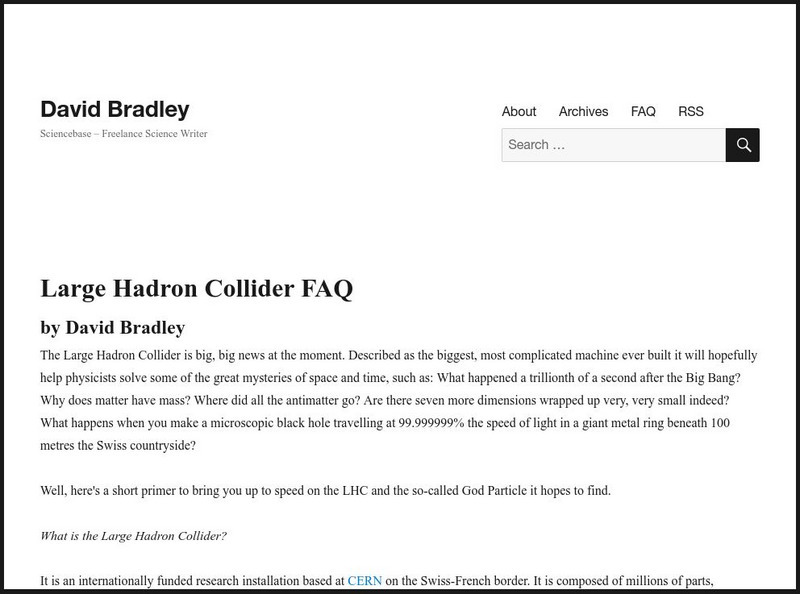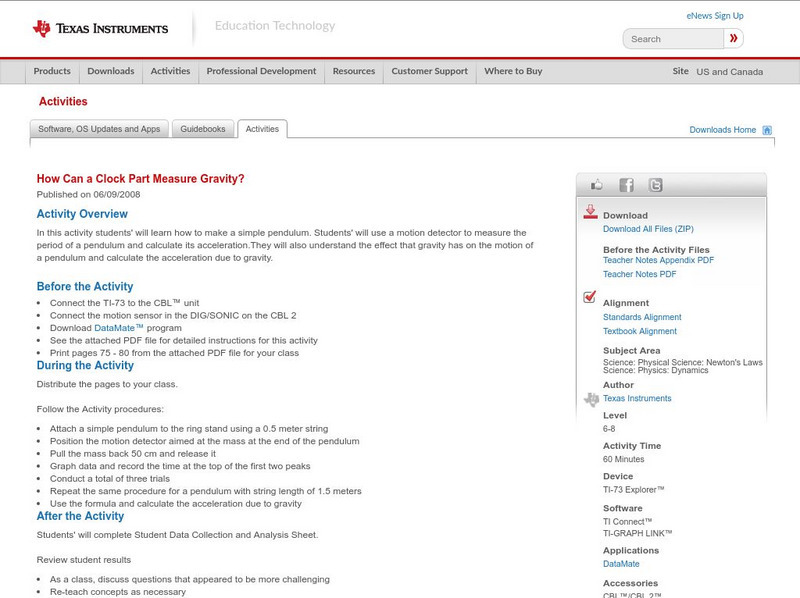Hi, what do you want to do?
My Science Site
Bj's Science: Take a Walk! [Pdf]
In this activity students literally walk through this activity calculating acceleration. Also, students calculate speed, graph acceleration, as well as do statistical data analysis. This resource is in PDF form; requires Adobe Reader.
Bill Nye
Bill Nye: Falling for Science
Try this at-home science experiment to learn about acceleration due to gravity.
Sophia Learning
Sophia: Newton's Second Law: Lesson 2
This lesson introduces Newton's Second Law and explains that force is equal to mass times acceleration. It is 2 of 3 in the series titled "Newton's Second Law."
Sophia Learning
Sophia: Newton's Second Law: Lesson 1
This lesson introduces Newton's Second Law and explains that force is equal to mass times acceleration. It is 1 of 3 in the series titled "Newton's Second Law."
Other
Frequently Used Terms in Gifted Education
Here are definition for several terms parents of gifted children should be familiar with as they research the educational options and school programs for gifted youth. Terms include "accelerated learning," "advanced placement," "cluster...
TeachEngineering
Teach Engineering: Human Power
Students do work by lifting a known mass over a period of time. The mass and measured distance and time is used to calculate force, work, energy and power in metric units. The students' power is then compared to horse power and the power...
TeachEngineering
Teach Engineering: Car Collision Testing & Tradeoffs: Don't Crack Humpty
Student groups are provided with a generic car base on which to design a device/enclosure to protect an egg as it rolls down a ramp at increasing slopes. During this activity, student teams design, build and test their prototype...
TeachEngineering
Teach Engineering: Projectile Motion
Students are introduced to the concept of projectile motion, of which they are often familiar from life experiences,such as playing sports such as basketball or baseball, even though they may not understand the physics involved. Students...
Texas Instruments
Texas Instruments: What Is Gravity?
In this activity, students will perform a series of experiments with inclined planes. They will learn that as the angle of inclination of the inclined plane approaches 90 degrees, the value of the acceleration of the cart traveling down...
Symmetry Magazine
Symmetry Magazine: Explain It in 60 Seconds: Dark Matter
Dark matter is still quite a mystery to scientists, who hope to learn more about it through experiments with particle accelerators. "Explain It In 60 Seconds" is an article series that aims to summarize in a few paragraphs the meaning of...
Other
Hands on Cern: Explore the Smallest Components of Matter
An online course in particle physics with colorful images, charts and animations. Begin by learning about the Standard Model and the types of particles, particle families, and forces, then carry this knowledge over to your study and...
Khan Academy
Khan Academy: Rotational Inertia
Learn how the distribution of mass can affect the difficulty of causing angular acceleration.
TeachEngineering
Teach Engineering: Crash! Bang!
Students learn about the physical force of linear momentum - movement in a straight line - by investigating collisions. They learn an equation that engineers use to describe momentum. Students also investigate the psychological...
Science Education Resource Center at Carleton College
Serc: Com Padre: Will the Egg Break?
In this activity, students investigate why an egg does not break when thrown at a hanging sheet, but does when thrown at a wall. They will learn about momentum, and its applications.
Other
Sciencebase and Elemental Discoveries: Sciencebase: Large Hadron Collider
Learn facts about the Large Hadron Collider project and its impact on the world of physics research.
TeachEngineering
Teach Engineering: Newton Rocket Car
The purpose of this activity is to demonstrate Newton's third law of motion - which states that every action has an equal and opposite reaction - through a small wooden car. The Newton cars show how action/reaction works and how the mass...
Physics Classroom
The Physics Classroom: Newton's Laws of Motion
Use this outline to find out about Newton's Laws of Motion. Use the different lesson plans covering the laws of motion to learn more.
Physics Classroom
The Physics Classroom: Circular and Satellite Motion: Athletics
Students investigate a variety of applications of circular motion principles to the world of sports, and use Newton's laws to mathematically analyze such motions. The emphasis will not be upon an investigation of the details of every...
Alabama Learning Exchange
Alex: Motion in One Dimension
This hands-on exercise allows students to view and calculate the various factors involved in one-dimensional motion. Students will use remote control vehicles to illustrate the linear motion. Students will use the information gathered...
Texas Instruments
Texas Instruments: How Can a Clock Part Measure Gravity?
In this activity students will learn how to make a simple pendulum. Students' will use a motion detector to measure the period of a pendulum and calculate its acceleration.They will also understand the effect that gravity has on the...
Open Curriculum
Open Curriculum: Vectors and Motion
Learn more about the properties of velocity, acceleration, and force vectors in this illustrated article.
Khan Academy
Khan Academy: What Is a Centripetal Force?
Learn what centripetal forces are and how to calculate them. Included are two problems with the solutions provided.
Khan Academy
Khan Academy: What Is Newton's Second Law?
Learn about the fact that forces cause acceleration in this article about Newton's Second Law. Includes examples and worked examples of problems.
Science Education Resource Center at Carleton College
Serc: Maximizing Kinetic Energy: An Investigation Using Marbles
Using marbles to construct a marble run, learners will learn about projectile motion, kinetic energy, potential energy, final velocity, and forces.





![Bj's Science: Take a Walk! [Pdf] Activity Bj's Science: Take a Walk! [Pdf] Activity](https://static.lp.lexp.cloud/images/attachment_defaults/resource/large/FPO-knovation.png)

